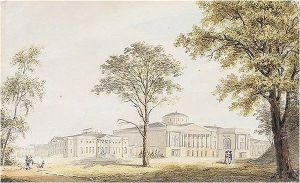Stepan Filippowitsch Galaktionoff Paintings
Stepan Filippowitsch Galaktionoff, born in 1870, was a Russian artist whose life and work spanned the turn of the 20th century, a period marked by significant political, social, and artistic upheaval in Russia. Galaktionoff's artistic journey began in an era dominated by the Realist movement, which sought to depict everyday life and its social conditions with truth and accuracy. However, like many of his contemporaries, Galaktionoff's style evolved over time, reflecting the various influences and artistic currents that flowed through Russian art during his lifetime.
Galaktionoff received his artistic education at the Imperial Academy of Arts in Saint Petersburg, the premier art institution in Russia, which provided him with a solid foundation in the classical traditions of painting. Early in his career, Galaktionoff was influenced by the Peredvizhniki (the Wanderers) - a cooperative of Russian realist artists who, in protest against academic restrictions, formed an artists' cooperative which evolved into the Society for Travelling Art Exhibitions in 1870. This influence is evident in his early works, which often depicted the Russian landscape and peasantry with a sympathetic realism, focusing on the beauty and harshness of rural life.
As the political climate in Russia became more turbulent with the approach of the Russian Revolution in 1917, Galaktionoff's work began to reflect the changing times. Though not overtly political, his later paintings subtly incorporated elements of social critique and a sense of nostalgia for a disappearing way of life. This period saw a shift in his technique as well, with a move towards a looser, more expressionist style, which allowed him to capture the emotional and psychological undertones of his subjects with greater intensity.
Despite the acclaim he received during his lifetime, Stepan Filippowitsch Galaktionoff's legacy was somewhat obscured by the tumultuous history of 20th-century Russia, particularly the Soviet period, which favored different styles and narratives in art. Nevertheless, his works have been rediscovered and appreciated in recent years for their contribution to the rich tapestry of Russian art. Galaktionoff passed away in 1944, leaving behind a body of work that continues to be studied and admired for its depth, beauty, and historical significance.
